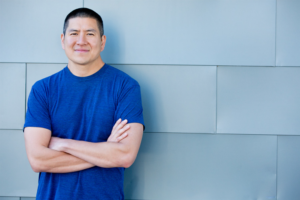
Dr. Eric Tang
This week we are joined by Dr. Eric Tang, Associate Professor of African and African Diaspora Studies and Director of the Center for Asian American Studies at The University of Texas at Austin. We discuss COVID-19 and Asian Americans, especially now that the pandemic has brought to the forefront many of our nation’s deep xenophobic biases that harm Asian people of color in the United States, including here on the University of Texas at Austin campus.
Asian American Student Mental Health
Dr. Tang has had the opportunity to observe the unique mental health challenges that young Asian American students experience on a daily basis. He explains how meeting with and teaching Asian American students in his courses on race and ethnic studies has given him a firmer appreciation of the pressures that these students are under. “I think that [Asian American students] are under more career pressures than I was to go into STEM and satisfy the demands of immigrant parents. As a teacher, I am beginning to really appreciate and learn from my students that that expectation is very real.” It is because of these kinds of pressures that Dr. Tang believes many Asian American students end up sacrificing their truer interests in order to satisfy family expectations – often at the expense of their own mental health.
The “Racial Location” of Asian Americans
Where do Asian Americans fit within the complex division racial categories in the U.S.? “I think there is a struggle among Asian Americans to figure out their racial location,” says Dr. Tang. “Are they people of color in ‘the same way’ as African Americans and Latinos, who are dealing with economic inequality compounded by environmental inequality – such as housing segregation and environmental racism – or are they people of color of a different sort, because, according to census data, they tend to do better economically, they tend to have higher educational achievement? Are they closer to white because of that? That’s a question that many Asian Americans struggle with.”
Despite the data and the metrics, Dr. Tang explains that culturally, Asian Americans can still never be white, because whiteness is already predicated on “othering” Asians. “We have a history of tethering citizenship to whiteness, and Asians have been excluded from migration and citizenship for the majority of U.S. history.” This is just one of the reasons why Dr. Tang says Asian Americans today may feel like they are racialized as “perpetual foreigners.”
Anti-Asian Racism during the Pandemic: “A Change in Same”
The pandemic has highlighted historical racisms against Asians and, in some ways, has renewed them. “We might think of what’s happening to Asian Americans and the discrimination they face in the wake of – or rather, in the present of – the pandemic as a ‘change in same’,” says Dr. Tang. He points out the similarities between the xenophobic language of the pandemic, such as the term ‘Chinese virus,’ and, for example, the historically racist term ‘Yellow Peril,’ which came out in the late 1800s, along with other examples of times when Asians have been framed as a kind of a virulence on American society.
But as much as this anti-Asian racism is “the same,” circumstances for Asian Americans have also changed. “We are dealing with a much larger Asian American population today than existed in other periods when Asians experienced discrimination,” explains Dr. Tang. “As a result, there could be a more robust response – an anti-racist response – against that kind of racism.”
Opportunities for Unity and Mutual Support
The mental health of Asian Americans is undoubtably being challenged right now. This, Dr. Tang hopes, could be a point of unity – especially on campuses. “When I look at the alarming data about the rates of depression and anxiety among Asian American students and the tragic number of suicides among Asian American students, I say to myself, this could be something that, across class differences, Asian American students and the community in general could rally around,” says Tang. “COVID is just one catalytic point that makes it even more important to do this work together, because the pandemic has brought out racism around Asian Americans that we haven’t seen for quite a while.”
Related Content
- Episode 100: Black Lives Matter
- Episode 13: Deportation Threat and the Children of the Undocumented
- Episode 45: Deportation Anxiety for Today’s Young Adults
- Episode 85: Refugee Resilience and Well-being: A Voice from the Field
- Episode 57: Supporting Our Dreamers
Learn more about our podcast and check out other episodes!
